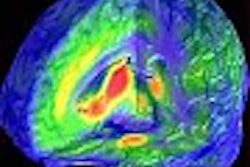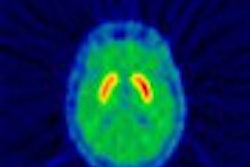Although not originally considered part of official cancer treatment protocol, five of the major cancer centers in the U.S. rely on PET imaging for evaluating patients with diffuse large B-cell lymphoma, also known as non-Hodgkins lymphoma. PET is now the favored modality for assessing the disease, according to information accrued by the National Comprehensive Cancer Network (NCCN) and the non-Hodgkins Lymphoma Database.
At the 2003 NCCN conference earlier this month in Hollywood, FL, Dr. Jonathan Friedberg presented data from the 19 national cancer centers that comprise the NCCN, as well as five institutions that make up the non-Hodgkins Lymphoma Database. Friedberg is an assistant professor of medicine at the James P. Wilmot Cancer Center, University of Rochester, Rochester, NY.
The NCCN began writing treatment algorithms as guidelines for its member hospitals in 1996. The next year the organization began collecting data on outcomes. The five database institutions are the City of Hope Cancer Center in Duarte, CA; Fox Chase Cancer Center in Philadelphia; M.D. Anderson Cancer Center in Houston; Roswell Park Cancer Institute in Buffalo, NY; and the Dana Farber Cancer Institute in Boston, where Friedberg worked previously.
Friedberg said that while PET is still not listed as a standard evaluation for B-cell lymphoma, it is being used for that purpose more and more. When the guidelines first mentioned PET, less than 5% of patients underwent the scan; by last year more than half had the scan performed.
For this study, data was collected on 539 non-Hodgkin’s lymphoma patients, including 161 patients with newly diagnosed large B-cell lymphoma. The patients were entered into the database between July 1, 2000 and December 5, 2002.
One of the main roles of PET is for staging the disease, Friedberg said. The level of metabolic function believed to be lymphoma in these patients could influence their treatment, he added.
"Perhaps even more interestingly, we are seeing the same pattern with follicular lymphoma and mantle cell lymphoma where there is really almost no literature to support that choice (of PET)," he noted.
Another pattern that Friedberg pointed out was that when an NCCN institution had acquired a PET scanner, other community-based practices followed suit. The database indicates that NCCN institutions are especially quick to utilize new technology, which then promotes use among other institutions. Formal NCCN literature for the use of PET in non-Hodgkins lymphoma staging should be available in the near future, he added.
By Edward SusmanAuntMinnie.com contributing writer
March 19, 2003
Related Reading
Physician groups navigate a rocky road to PET reimbursement, February 26, 2003
PET useful for staging pediatric bone sarcomas, February 7, 2003
MRI shows potential for staging pediatric non-Hodgkins lymphoma, January 2, 2003
Copyright © 2003 AuntMinnie.com




















